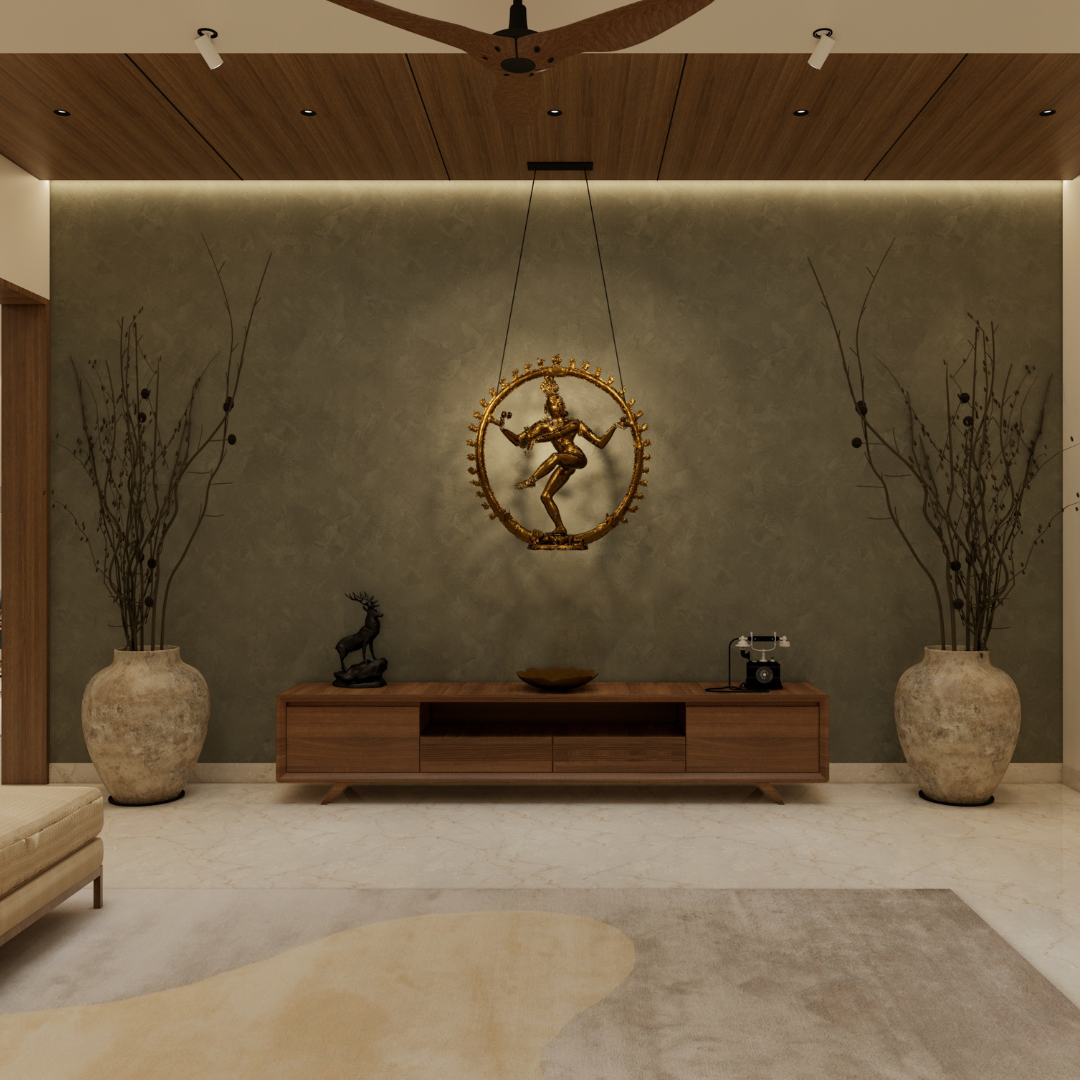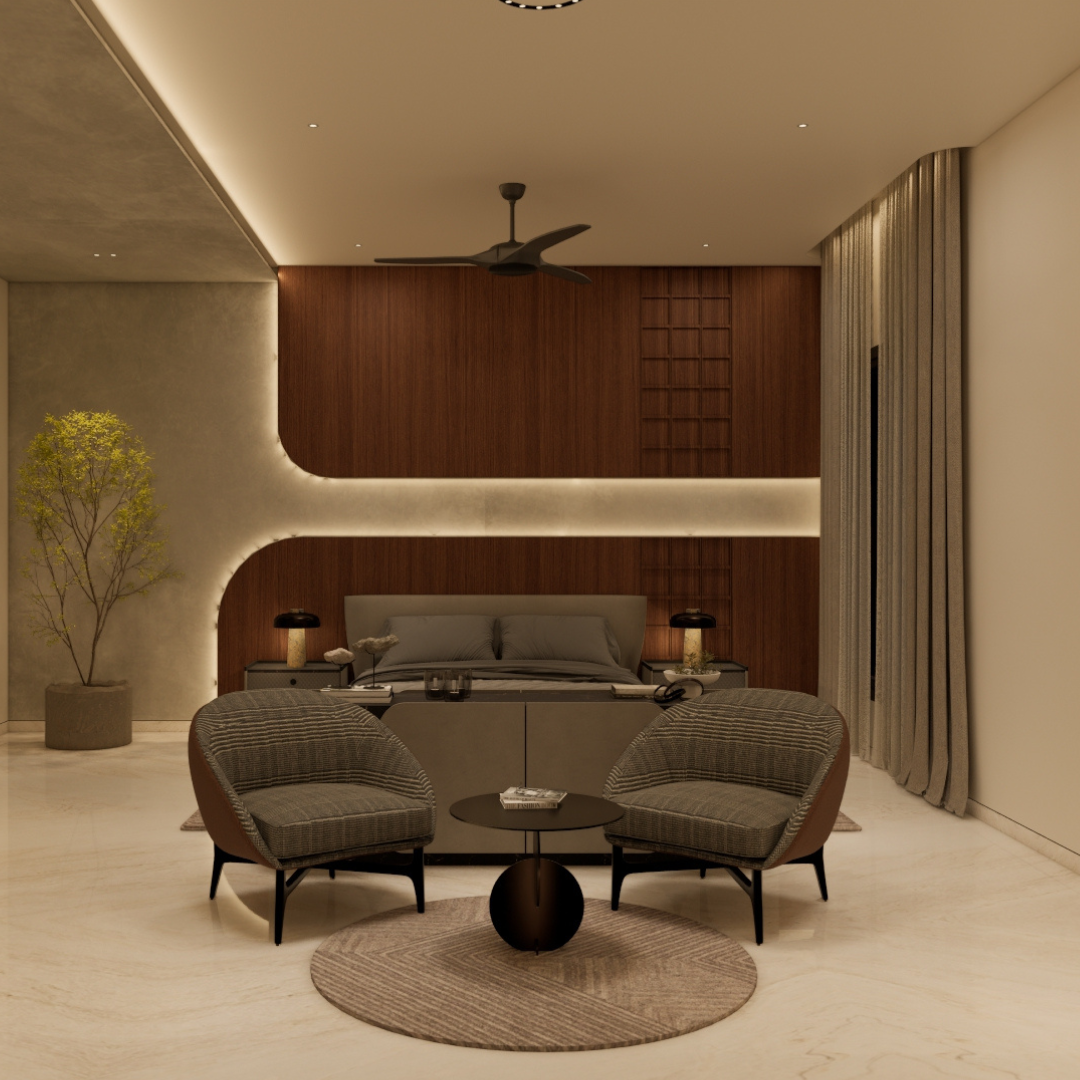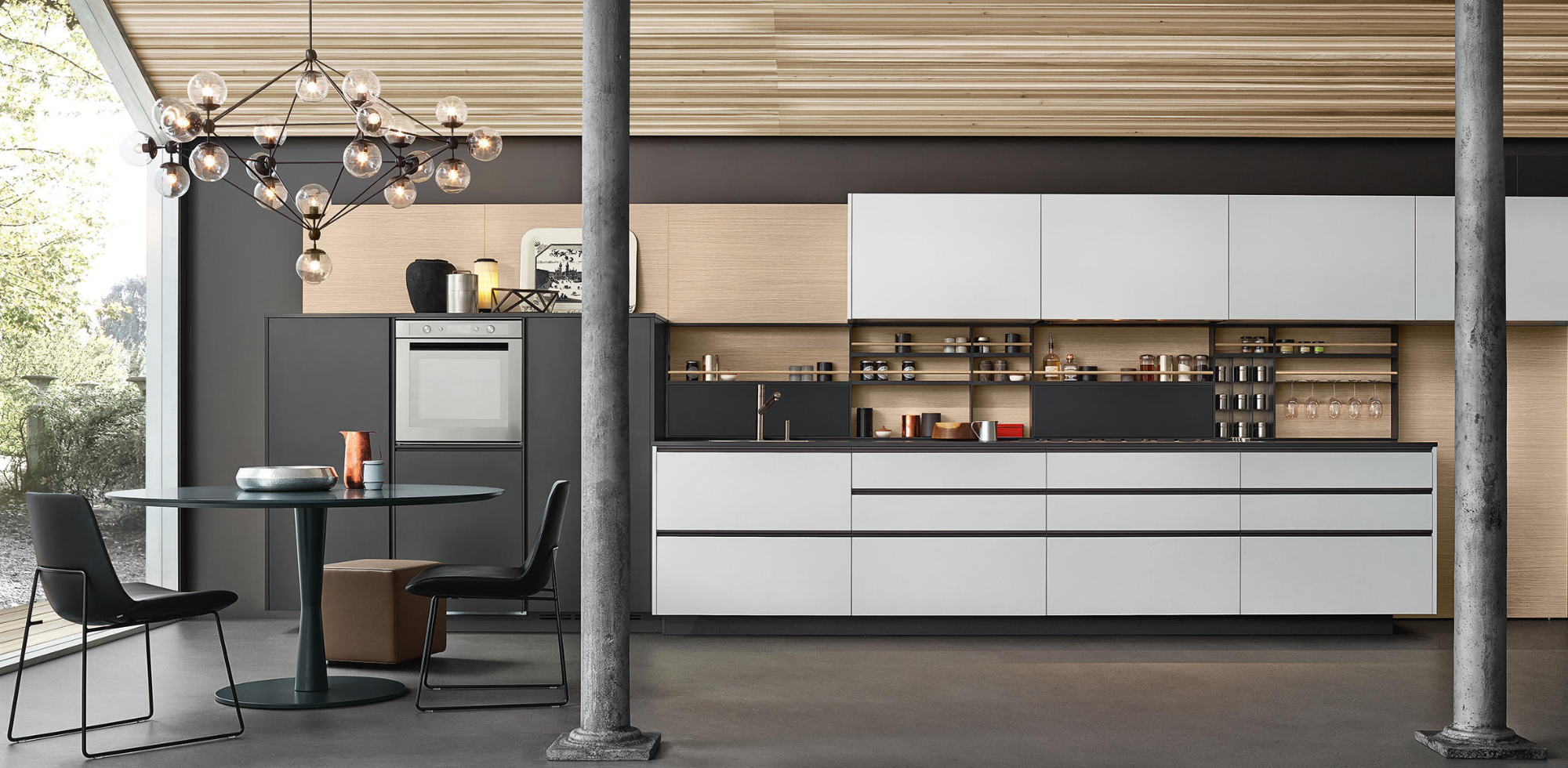The three-bedroom program began as a remodel of a 1954 ranch house which is located at the foot of a hill next to a seasonal creek. After realizing that the existing structure and soils were unsuitable, the team decided to reuse the existing footprint under the shade of a Valley Oak that had grown up close to the original house. The surviving portion of the original house is the fireplace, which was wrapped in concrete and used for structural support. This made additional grading unnecessary and allowed the new house to maintain the same intimate relation to the old oak. The family desired a living layout that would connect them directly to the landscape. They decided on a mezzanine plan with a double-height family space, a master bedroom and study stacked above the kitchen and nook. A screened pacing deck for long phone calls shades the upper level from afternoon summer sun. Downstairs, secondary bedrooms along an extendable hallway wrap an outdoor dining area situated between the kitchen and family room.
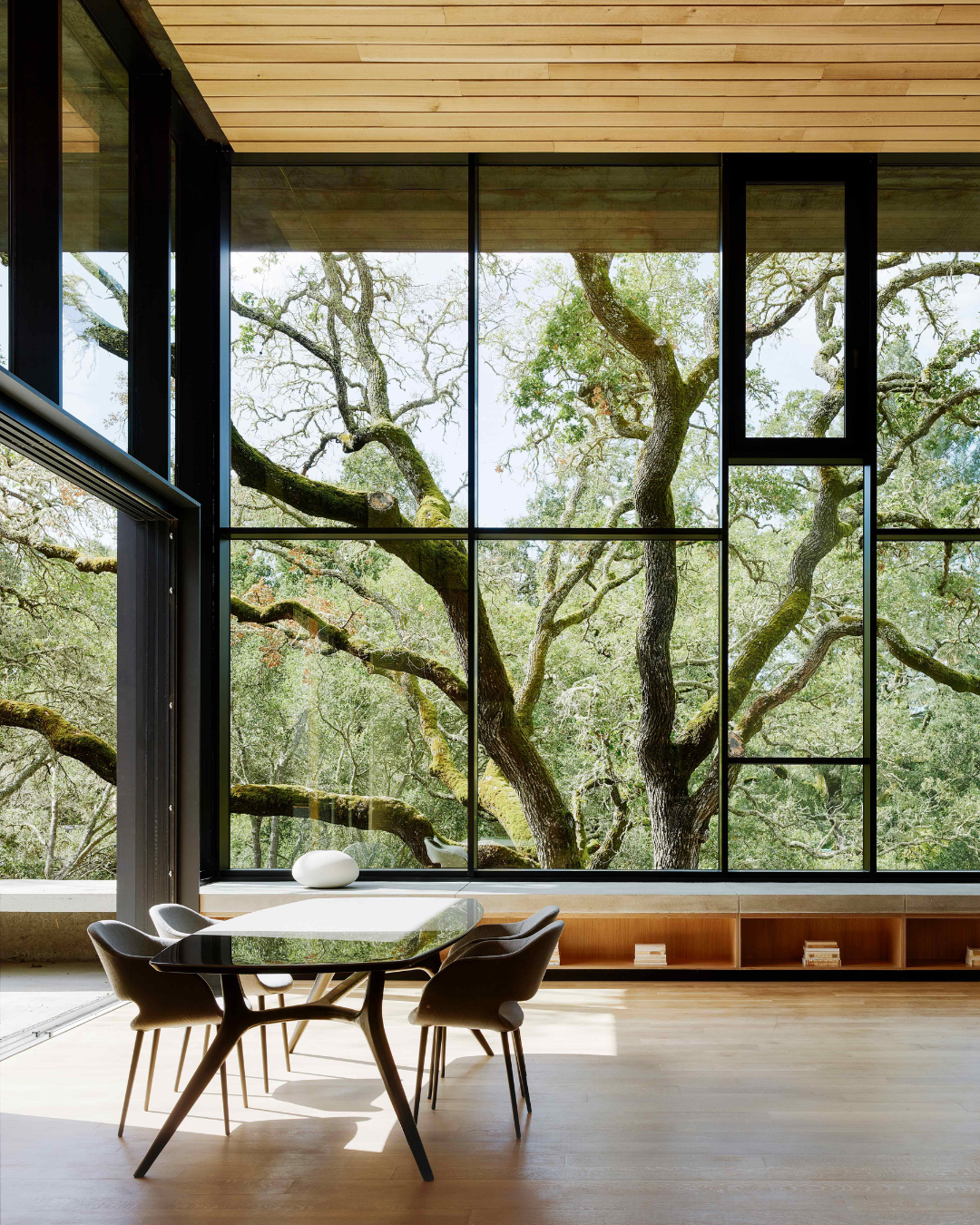

The construction materials and methods were evaluated and chosen based on a balance between first and lifecycle costs. The Corten steel rain screen was selected for the exterior skin and interior wood in order to take advantage of zero annual maintenance cost. The shotcrete foundation allowed for the formwork to be repurposed for wood framing. The Corten steel and shotcrete foundation are examples of single-use materials that were selected to reduce complexity in detailing and labor costs, which then allowed for a larger portion of the budget to be allocated for upgraded mechanical, insulation, and glazing systems. The same goes for the interior finishes; by choosing acoustically insulated, unfinished oak ceilings and walls, we created a relaxed and quiet built environment that allows the senses to focus on the natural environment. In other words, we placed an importance on creating a space that would promote a haptic connection to the rhythms of our planet.
A 14-gauge Corten rain screen provides a no-maintenance skin for your home. High levels of insulation and glazing efficiency reduce heating and cooling loads, saving you money on your energy bills. An 8.1kW photovoltaic system provides on-site renewable energy and produced more electrical energy than the house used the first year. Rainwater is collected via a waterfall from the roof at the end of the hallway, providing you with a supply of fresh water for toilets and laundry. Greywater is collected separately and reused for irrigation, further reducing your water consumption. Energy-efficient motors and pumps are used to minimize energy use and control heating and cooling. An energy recovery ventilator helps bring fresh air into the building.
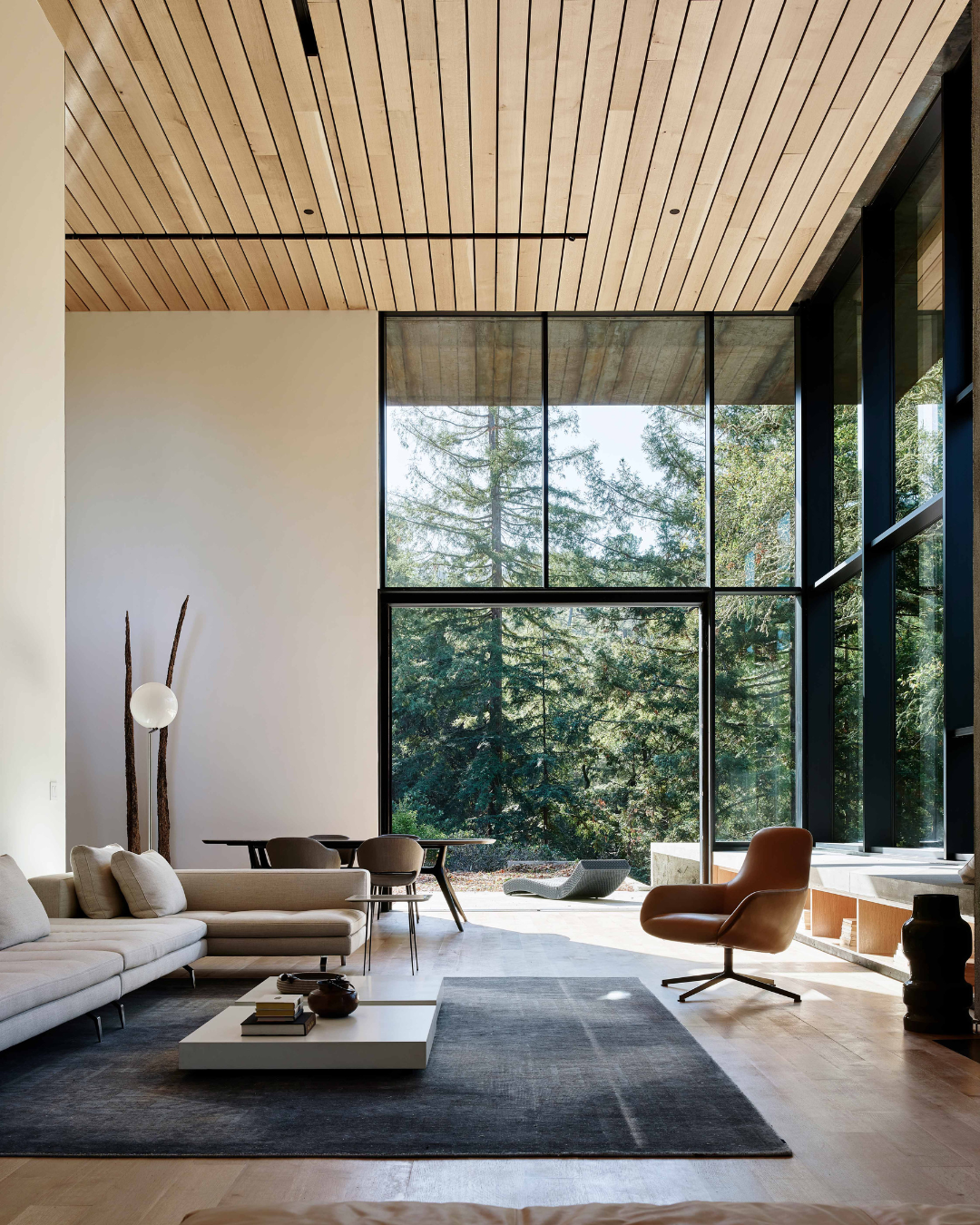

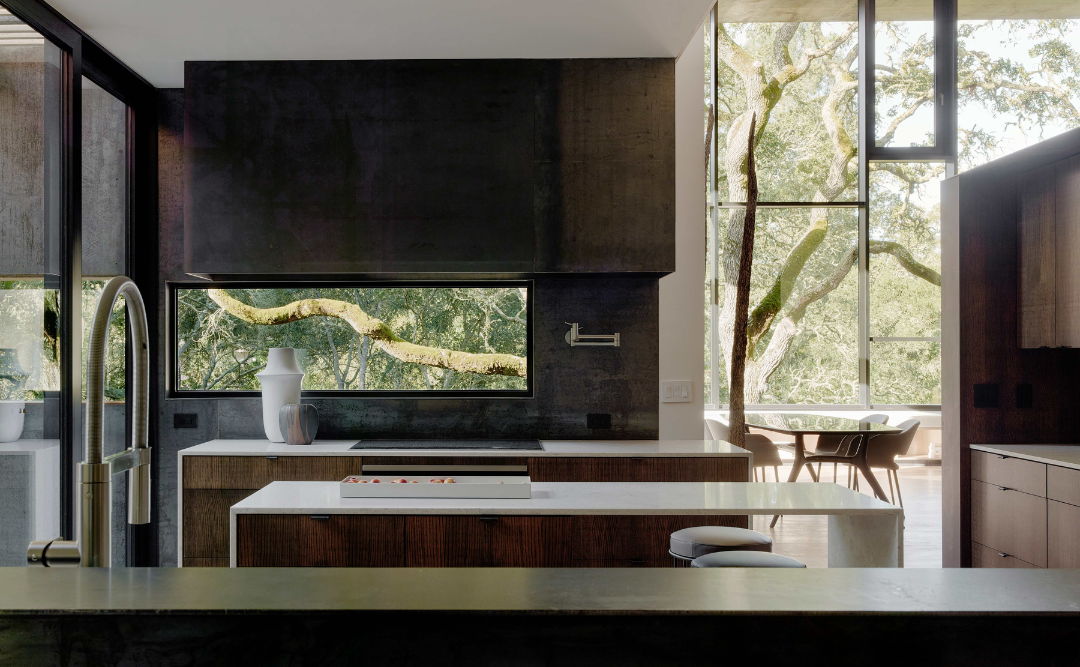
Designer: Faulkner Architects
Location: Orinda, USA
Images: Joe Fletcher


